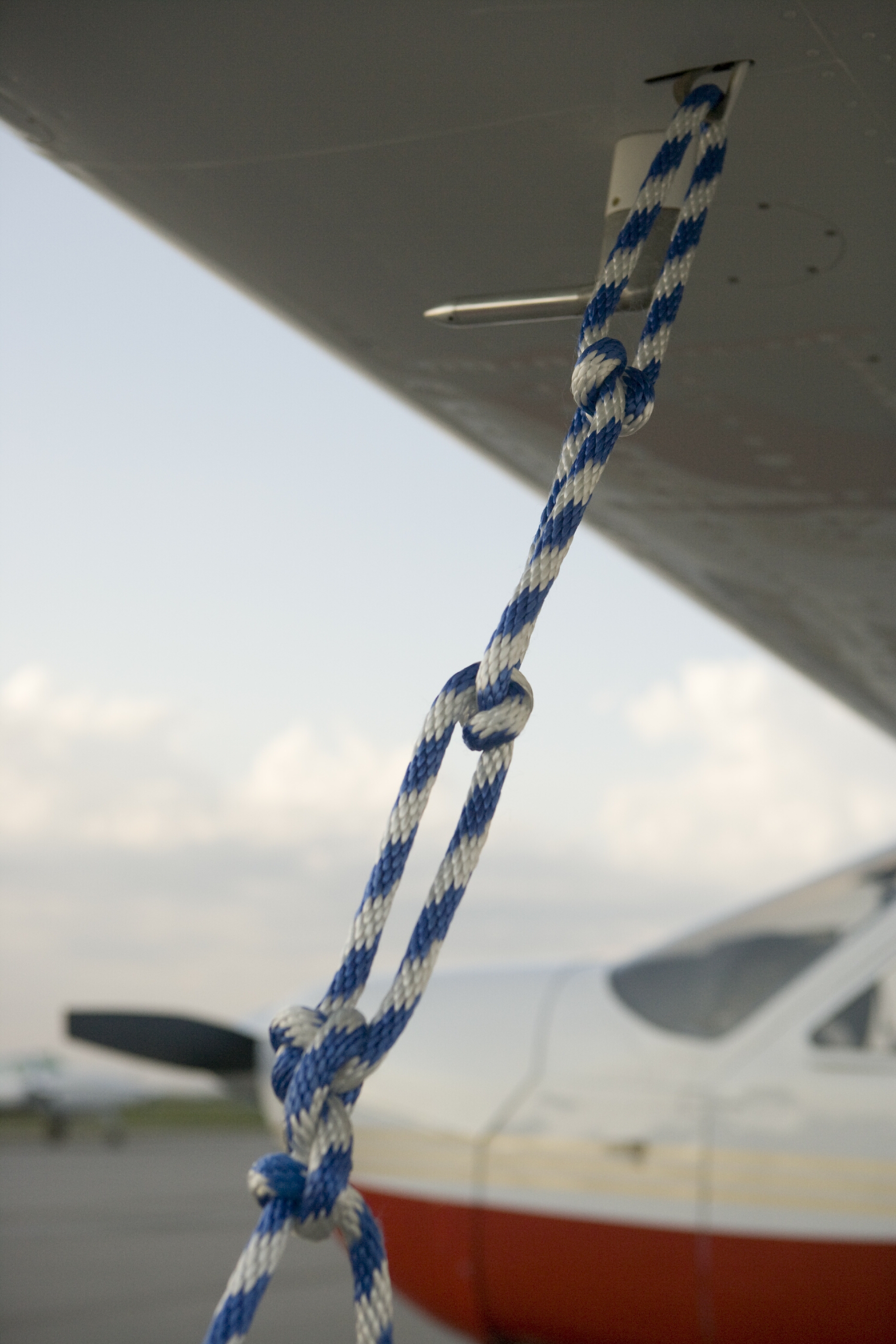Hurricanes
Each hurricane season, our members call or email AOPA for advice on how best to prepare their aircraft for the coming storm. This subject report provides tips for anchoring your aircraft to ride out the storm as safely as possible.
Hangaring Your Aircraft
For starters one should consider buying a spot in the local hangar (if there is one). Finding a spot there may be costly, or impossible if a storm is approaching. However, if you’re considering securing a spot in a hangar, you should pay very close attention to the building’s construction. A poorly built hangar may cause more damage to your aircraft if it collapses than your aircraft would have sustained if it was properly tied down.
Tying Down Your Aircraft

If tying your aircraft down proves to be the best method of protection, you may want to follow this checklist to help reduce (and perhaps eliminate) damage to your aircraft.
- Clear the area: When picking a tie down spot, look for an area with the fewest number of objects that could blow into your aircraft. If your spot has a storage box make sure it is secure.
- Park Upwind: Try to park upwind from other aircraft so the wind will blow them away from you, and try to park nose into the wind - although if the eye of the hurricane passes over you, the wind will blow from one direction, then reverse course.
- Cover: Make sure your windows and doors are latched. Cover engine inlets, the pitot tube, and the static ports, but don't leave anything dangling that could beat on your airplane in a howling wind.
- Chock: Chock the wheels and set the parking brake, but check your POH to make sure you can leave the brake set. Some systems can't compensate for heat expansion, and that can blow out seals and o-rings in the hydraulic brake lines. Your FBO may also want you to leave the brakes off so it can move the airplane.
- Dig or Deflate: Also consider deflating the tires or digging holes for the wheels to keep the airplane in place.
- Control Lock: You want to make sure the control surfaces don't flap in the breeze. Install an internal gust lock. A lock that holds the controls in a neutral position is much better than looping a seat belt around the controls. That usually sets the controls for a climbing turn, which is exactly what the aircraft will do if the tiedowns let loose. Even better, use external gust locks. Most aircraft don't have a rudder lock. An external rudder lock will cost much less than replacing a rudder. External gust locks on the elevator and ailerons can help prevent damage to control linkages and cables.
- Tiedowns: Replace your old rotted manila rope with nylon or Dacron rope or chains. Always use the tiedown rings; don't tie a rope to the wing strut. The rope could slip and bend the strut. Tiedown ropes or chains should form roughly a 45-degree angle to the ground. A bowline knot is probably the best for securing a rope to the tiedown ring. Secure the loose ends of the tiedown rope or chain. If you're using a chain, pass a link on the free end through the tension side and use a clip to hold it in place. Check the security of the anchor points. A tie-down anchor set in a tub of cement is fine in a zephyr; in a hurricane, it will become another heavy object beating your airplane to death. Some airports have heavy wire cables stretched across the ramp to tie to. If this is the case at your airport, tie down perpendicular to the cable rather than at 45 degrees to it. That will help minimize any slack from the tie-down rope sliding along the cable. For more information please see this advisory circular on how to tie down an airplane.
- Lift Fence: Remember that hurricane wind speeds are likely to be higher than the stall speed of your aircraft. That means when the storm comes, your airplane is going to try to fly. A lift fence, attached to the top of the wing about a quarter of the way back, acts as a spoiler, making it harder for the wing to generate lift. There are commercially-made lift fences, but you could make your own with some two-inch square lengths of wood, padding, and attachment cords. Just make sure the lift fence can't break loose.
Additional Resources
What to Do If You Can't Fly Away
How to “safely” ride it out
The Weather Never Sleeps: Handicapping Hurricanes
You may have to act without all the facts
Weather Warning Signs
Caution! Be very careful!
Advisory Circular AC No: 20-35C
FAA advisory with information on tiedown techniques and procedures
